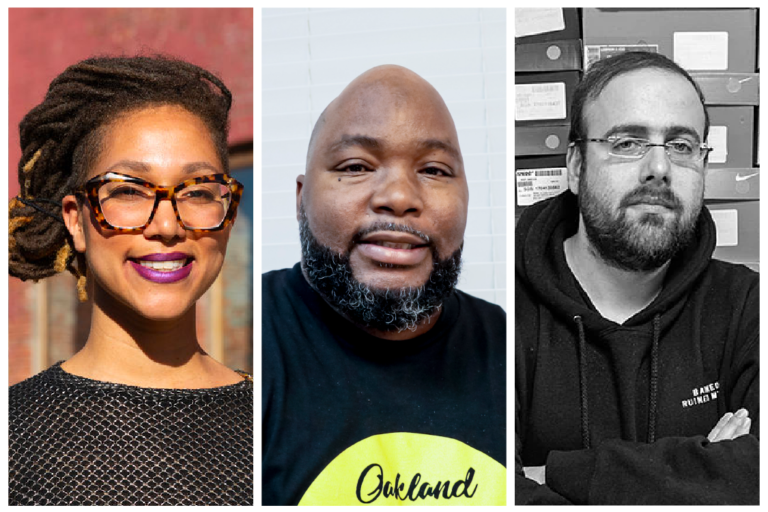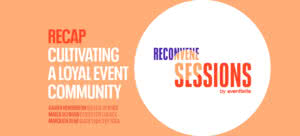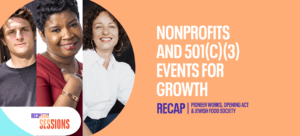One of the best ways to expand your events’ reach is to find partners that support your vision: big corporate brands, nonprofits, and government agencies can all help you level up. During Eventbrite’s RECONVENE Sessions event Expand Your Reach: Building Strategic Partnerships, three event creators with extensive experience collaborating with brand partners shared how they built – and maintained – those relationships.
Watch the full event recording, featuring Sneaker Con, Pioneer Works, and Oakland First Fridays, below:
Read on for a teaser of key takeaways from each of the event’s speakers.
Want more in-depth insights? Watch the full video above.
For additional tips from Eventbrite’s ongoing RECONVENE events series, visit our recaps hub.
Alan Vinogradov, co-founder of Sneaker Con
Sneaker Con is the world’s biggest travelling trainer show.
1. Think about different types of partnerships
Sneaker Con has three types of partners, Vinogradov says: endemic partners (brands that are in the space, such as those that make sneaker customisers and cleaning products); corporate partners, such as eBay and Monster Energy; and celebrities who are passionate about sneakers.
2. Be clear about the value you offer corporate partners
Live experiences like Sneaker Con are “an integral part of any brand’s strategy,” Vinogradov says. These events “give brands a pulse on what’s really going,” and a way to understand their current and potential customers – and get immediate feedback. For example, eBay is able to introduce Sneaker Con attendees to its trainer authenticating services, thus widening its customer base.
3. Start small, and then scale up
Sneaker Con initially partnered with Monster Energy on just one event, but the goal was to do much more. Vinogradov recommends starting small, setting expectations, and focusing on managing the relationship. “Prove your value, and that it’s going to be beneficial to them, and then your audience is going to deliver ROI to them,” he says. The rest will follow.
Christina Daniels, director of residencies and classes at Pioneer Works
Pioneer Works is a Brooklyn cultural centre that supports research and experimentation across disciplines.
4. Seek out mission-aligned partners
Daniels has learned, through trial and error, how important it is to clarify your goals through each step of establishing a partnership. Try saying: “I want X to happen, and X looks like this. Does that look like success to you? How do we foster that together?”
5. Figure out what your priority communities are
Pioneer Works did an internal exercise that helped them figure out they wanted to reach the parents of local schoolchildren. Daniels’ team hoped parents would start bringing their children outside of school time, so they held an exhibition featuring the children’s art as a way to introduce the parents to the institution.
6. Approach initial conversations like a brainstorming activity
When you approach a potential partner, let them know you’re interested in exploring opportunities – and it’s OK if you don’t know what they are yet. That allows both sides to share ideas, rather than using a more prescriptive approach, like, “Hey, here’s what we want to do,” which can feel one-sided.
Greg Harris, director of Oakland First Fridays
Oakland First Fridays provides an opportunity for the California community to come together to celebrate and support the arts.
7. Cross your T’s and dot your I’s
Harris collaborates with a wide array of government officials on Oakland First Fridays, including the fire department, health department, and police department. “Permits are very difficult – you have to cross your T’s and dot your I’s. If you don’t, things get delayed,” he says. “You build stronger relationships by doing things the right way,” even if it’s tedious.
8. Emphasise the opportunity for local governments to connect with their people
When working with governments, frame the partnership as a way for agencies to build relationships with the people they serve. The Oakland Police Department, for example, sets up recruitment tables at each monthly festival.
9. Plan as far in advance as possible
Harris plans four or five monthly festivals at a time – not just the one that’s about to happen. This is especially important when collaborating with government agencies. Make sure as well to document your process (hello, checklists), following it closely, and remember the earlier you get started, the smoother things will go.





